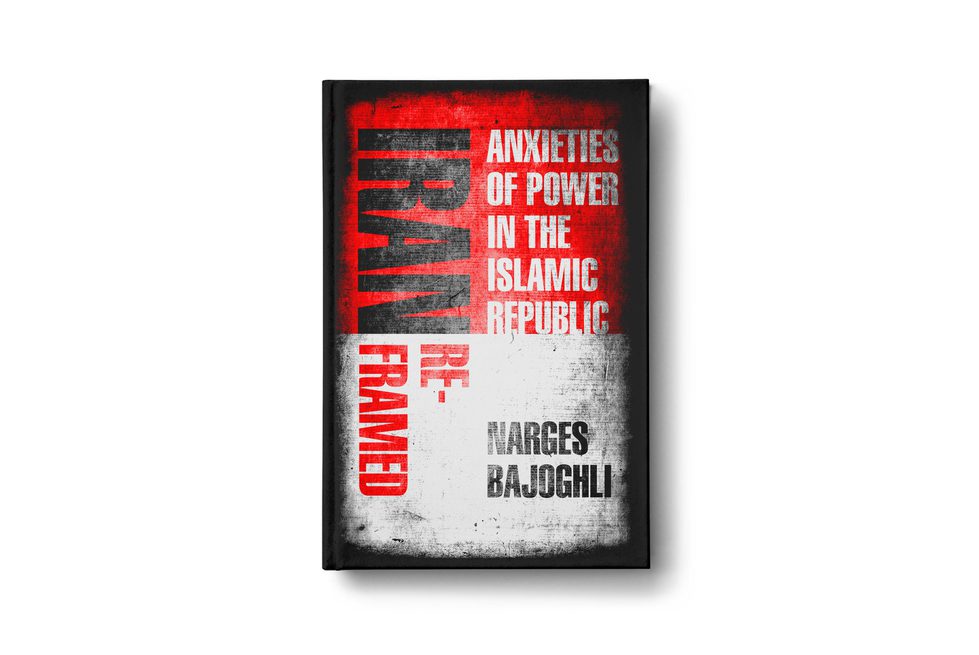Producing a Revolution: An Ethnography of Pro-Regime Media Makers in Iran
From the Series: Book Forum: Iran Reframed
From the Series: Book Forum: Iran Reframed

The Iranian Revolution of 1979 was a massive popular revolution against the American-supported government of Mohammad Reza Pahlavi (a monarch). It had dramatic reverberations around the world. Within the span of about a year, Iran shifted from a powerful U.S. ally governed by an autocrat to a state governed by Shi`i Islamic norms. Now, some 40 years after the 1979 Revolution, half of Iran’s citizens are too young to have directly experienced or remember the Revolution or the subsequent upheaval of the Iran-Iraq War (1980-88). As a result, the postrevolutionary regime faces the constant challenge of keeping the Revolution “alive” (Bajoghli 2019, 25).
At the same time, Iran is constantly in the news worldwide. Headlines from major U.S. and international news organizations discuss the Iran nuclear deal, sanctions, and political hostages. We hear about skirmishes in the Persian Gulf. Moreover, because our media focuses on those who valiantly protest the strictures of the Islamic Republic, we imagine a regime set against the masses, and a population disengaged from the domain of power (Adelkhah 1999; Olszewska 2013).
Very little is known from an ethnographic perspective about paramilitary organizations like the Iranian Revolutionary Guard, Ansar Hezbollah, or the Basij, and less is known about how those who wield the power of media-making from within these organizations are strategically redefining the revolutionary project and appealing to Iran’s youth. Narges Bajoghli’s book, Iran Reframed (2019), provides a powerful new lens through which to look at these confluences. She spent nearly four years gaining access to regime media makers from the Revolutionary Guard and Basij and five more years conducting research with them, providing an unprecedented view of how they are cultivating a new generation of regime supporters through modernized, nationalist, and paternalistic propaganda, even as many youths remain decidedly skeptical of these efforts.
Bajoghli contends that, contrary to popular belief, opinions within the ranks of these regime media makers are much more diverse than one would think, particularly across generations. This is true of the Basij media makers she interviews, for instance, members of a volunteer paramilitary group that was founded by Ayatollah Khomeini in 1980 (and a unit of the Revolutionary Guard) that is now tasked, in part, with confronting a “soft war” (jang-e narm) against U.S., European, and Israeli cultural influences and media. For instance, quoting Mr. Hosseini, one of her core interlocutors, she notes, “There is not one definition of the Basij. I guess we all believe in the Imam [Khomeini] but beyond that, we’re mixed...” (2019, 35).
Mr. Hosseini, notably, was also critical of the new generation of Basijis who have very different experiences and politics from his own. According to Bajoghli, for instance, the first generation of Basij are those who fought in the Iran-Iraq War. The second generation are those who joined the Basij in the 1990s, and the third joined in 2005, approximately when Mahmoud Ahmadinejad became President. She explains that many members of the first generation are critical of the later generations, who were trained under the Supreme Leader and seem to advocate more hardline politics.
The center of Bajoghli’s (2019, 99) book, however, is how its regime media producers utilize film and other media such as YouTube videos to “produce nationalism” and “wake up” the younger generations in Iran so that they won’t fall for just any opposition movement against the regime. They have developed a tactic of moving away from creating content solely for state television (automatically associated with regime propaganda) and have shifted to small production studios capable of generating material that is not as easily identified as pro-regime. Interestingly, instead of emphasizing religious values, they have emphasized state paternalism, masculinity, and nationalism (Bajoghli 2019, 91). Many of the films further seek to provide historic “proof” that the Islamic Republic is right in its distrust of Iranian opposition groups and these groups’ foreign backers.
As a fellow anthropologist of Iran and writer on the Basij who also hopes to complicate our views of pro-regime Iranians (Wellman 2021), I very much appreciate Bajoghli’s nuanced portrayal of Iran’s powerful media producers. Her ability to emphasize the diversity of these producers’ politics and strategies for dissemination of media stems from her careful ethnographic research. From her monograph, we learn why many continue to value the Revolution and maintain strong support for the Islamic Republic. We are also asked to think: how are revolutionary projects sustained? How do they change and shift? What do they reflect about human aspirations and longings for independence, or resilience, or particular forms of nationalism in today’s geopolitical climate?
Adelkhah, Fariba. 1999. Being Modern in Iran. London: C. Hurst & Company.
Bajoghli, Narges. 2019. Iran Reframed: Anxieties of Power in the Islamic Republic. Stanford, Calif.: Stanford University Press.
Olszewska, Zuzanna. 2013. “Classy Kids and Down-at-Heel Intellectuals: Status Aspiration and Blind Spots in the Contemporary Ethnography of Iran.” Iranian Studies 46, no. 6: 841–862.
Wellman, Rose. 2021. Feeding Iran: Shi‘i Families and the Making of the Islamic Republic. Berkeley: University of California Press.